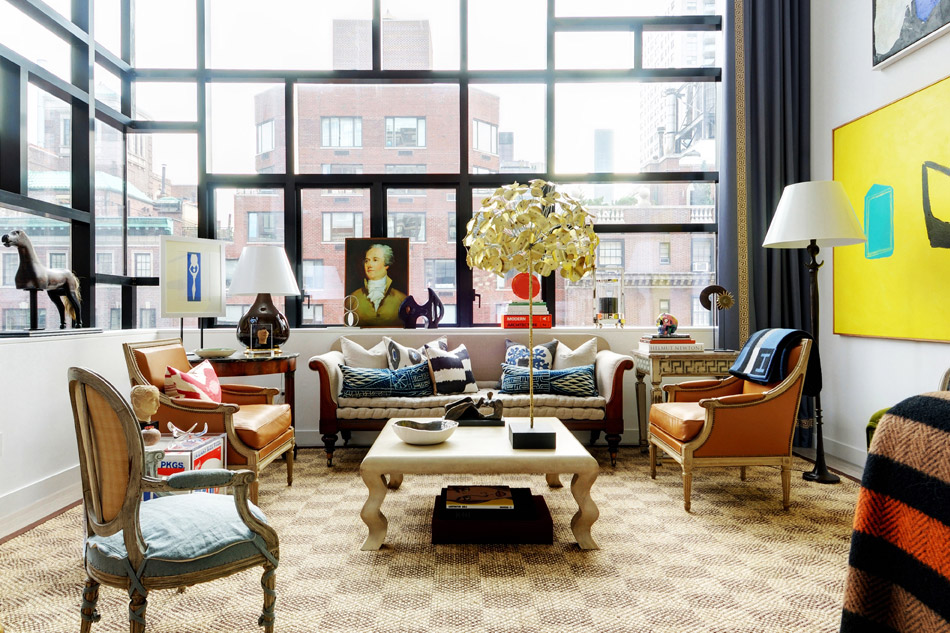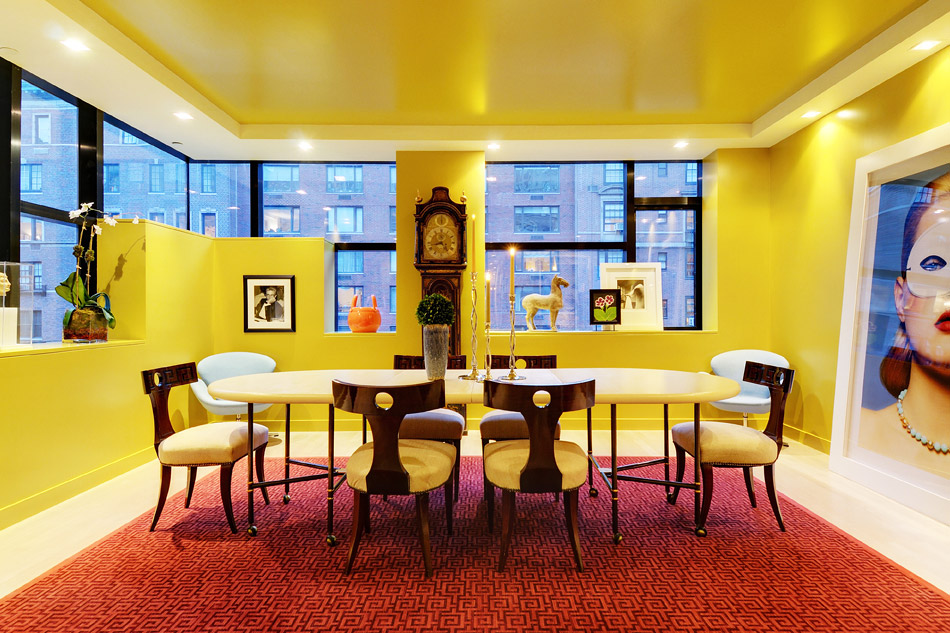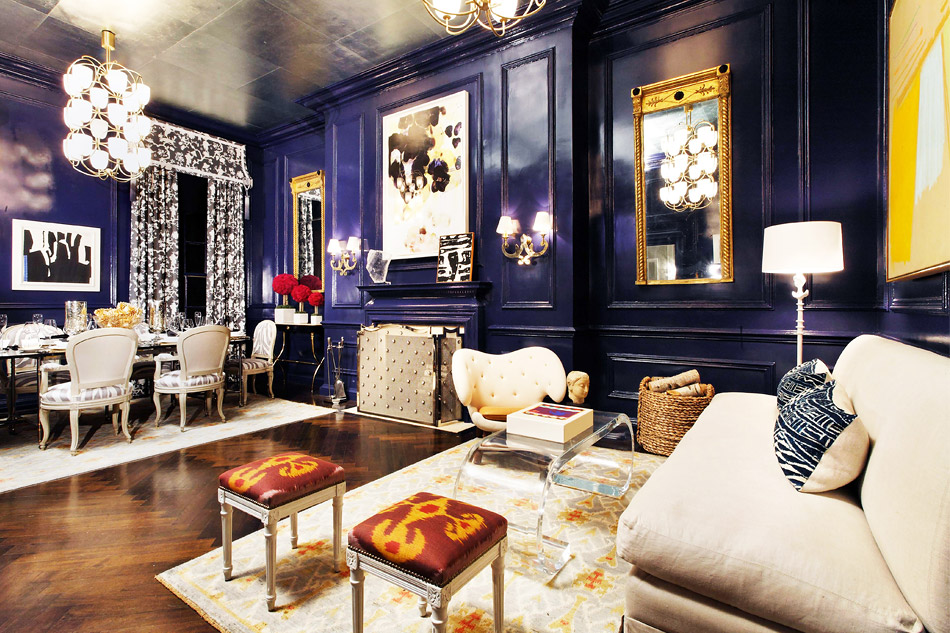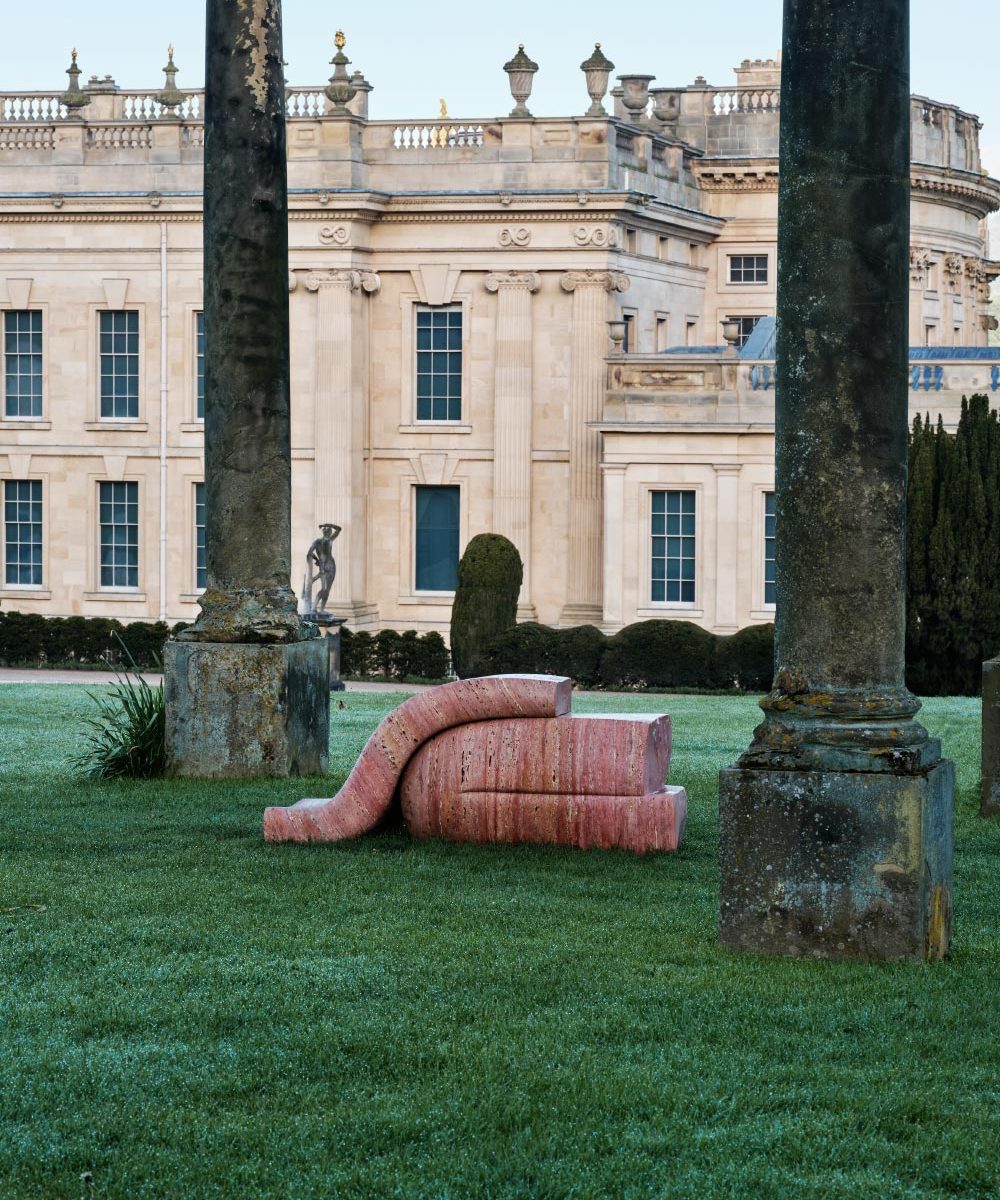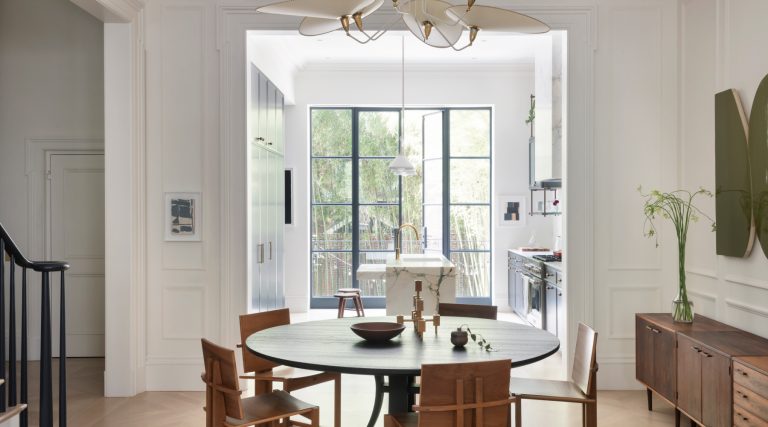
January 9, 2013“What I help clients do is shape and sharpen a point of view to bring out the essence of what they really want to have,” writes Cohler.
Anyone designing a living room must have a real passion, this is non-negotiable,” writes Eric Cohler in his first book, Cohler on Design (Monacelli Press). Like the rooms he’s been creating around the world for more than two decades, Cohler’s book is deeply textured, showcasing both the remarkable passion and keen intelligence he brings to interior design. A one-time law school student, Cohler left that behind to pursue a master’s degree in historic preservation from Columbia University’s School of Architecture. (He also studied architecture at Harvard’s Graduate School of Design.)
Cohler is much-published, with his work often displayed in leading shelter magazines, and his furniture, fabric and rug designs for Lee Jofa and lighting for Visual Comfort have garnered an impressive following. Indeed, Michael Smith used Cohler’s Lee Jofa Tyler Crewel fabric for his 2009 redo of the White House private quarters, where it adorns the Obamas’ dining room.It’s successes such as these that ensure that “every day feels like Christmas,” Cohler confesses in his book. But Cohler on Design isn’t just a prettily wrapped festive package; it’s also a forum for him to share the thought process behind more than 100 inviting and exuberant rooms he’s created for an assortment of clients, himself included. Because passion for Cohler isn’t just about creating a colorful explosion of patterns or bravely juxtaposing objects. Passion, he writes, means having “a clear vision” about how you want to live well in your own home.
Susanna Salk recently sat down with Cohler to find out what drives his passion, as well as his enduring vision.

In Charleston, South Carolina, the clean lines of antique French chairs upholstered in brown linen, a Mies van der Rohe Barcelona table and a contemporary tuxedo couch echo the narrow, high-ceilinged architecture of the room. Photo by William Geddes
I grew up that way. Both my grandmother and my mother very much created rooms in their own style and didn’t care what anyone thought of it, and I decided that’s the way I also wanted to live my life. It’s how I see the world, as well: I recently traveled to Cap Ferrat, Provence, Austin, New York, Detroit and Los Angeles all in a very short period of time. I design spaces with the same kind of visual layering — mixing the unexpected with the familiar is a kind of safety zone for me. But you have to be careful how you do it. You can never lose that balance and finely tuned tension between objects.
Your book shows how the Pantheon’s coffered ceiling inspired a Kohler showroom shower you designed, how Edith Wharton’s library at The Mount influenced your room at a Kips Bay Show House (complete with a bathtub in lieu of a desk), and how Christo’s Central Park installation, The Gates, helped you solve a storage issue in your client’s powder room. I loved seeing the source images directly alongside your own work, not to mention how creatively you decorate a bathroom!
It’s a small space generally and you have to be bold. We spend so much time there; those rooms are often not given enough credit for how important they are in our everyday life. They need to be playful as well as functional. And those examples well reflect my commitment to using the past as inspiration for the present.

“I found [the Pantheon’s] relationship with water, the elements, baptism — and all its incarnations — very striking,” writes Cohler of his inspiriation (top left) for this Kohler showroom shower. “This led me to think of…the mini rebirth bathing gives us every day, and hence the shower.” Images courtesy of Corbis and Kohler Co.
For me, the ideal clients are the ones who want to learn, who want their imaginations stimulated. I’ve taken clients to the Met or MoMA and even to my own apartment so they can get a sense of how art can transform design. I recently helped a client acquire a wonderful collection of about 16 pieces during more than a year’s worth of visits to galleries and auction houses. After I finished the renovation of his Gramercy Park apartment, it was finally time to hang the collection: it was like inserting a wonderful letter into an envelope. It took almost two days of experimenting — I felt like an artist in a studio. There was great satisfaction revealing it to him. He was so pleased.
How do the houses you cite from your own youth — your great grandparents’ Bauhaus-style house in Chicago, for example, or the completely modernized 1899 carriage house in the Hamptons where you summered as a child — impact your designs today?
That sense of using the past as a template for the future always informs my work. It’s the only way to give a soul to a room. I was privileged to grow up in spaces that featured amazing architecture and to have been able to study it intensely in school. As a result, I have a sense of symmetry tempered by the modernity that I grew up with. It allows me to be a better designer.

A space in the Charleston house features a fanciful collection of assorted objects “whose forms and provenance play off each other unexpectedly,” writes Cohler. Photo by William Geddes
These chapter headings are how I build a room, and their subjects are what I cover whenever I first interview a client. If I don’t intellectualize those subtleties then I’m not doing my job.
Your fabric is in the White House family dining room. How proud your ancestors would be!
Very, although I’m sure most of them were Republicans.
Purchase This Book
Or Support Your Local Book Store

